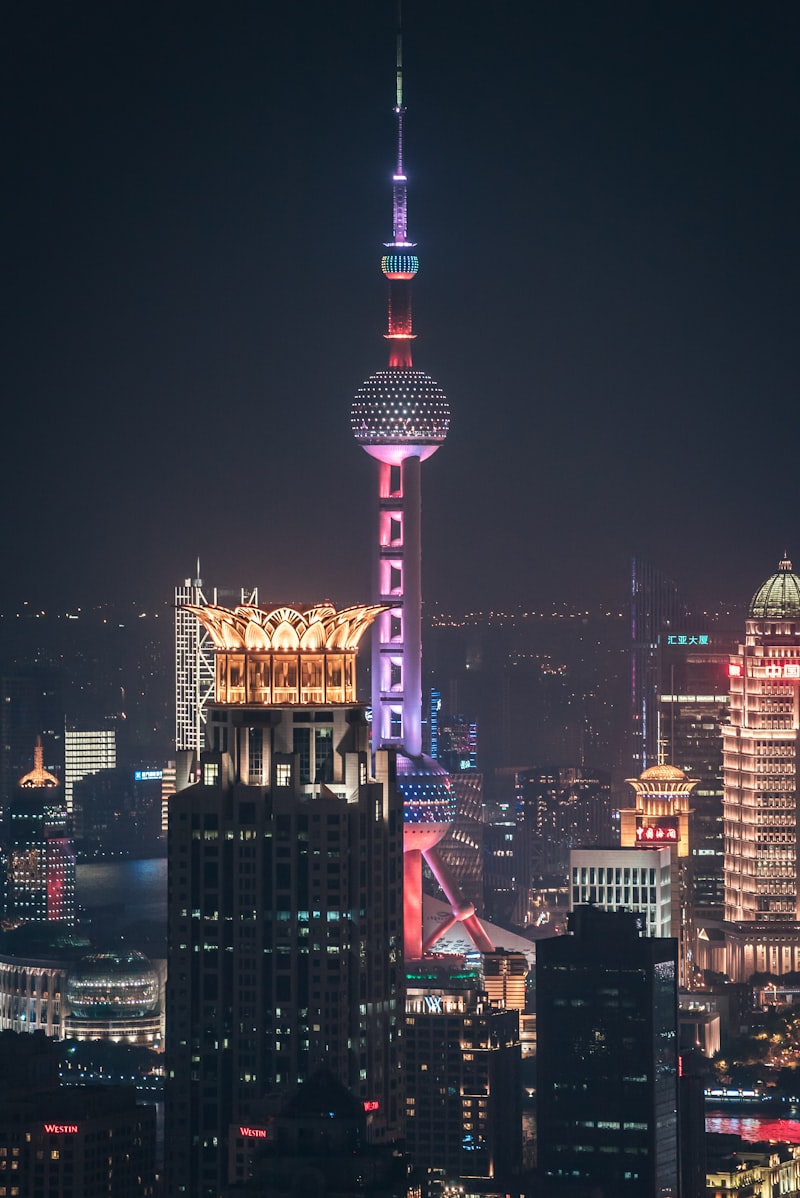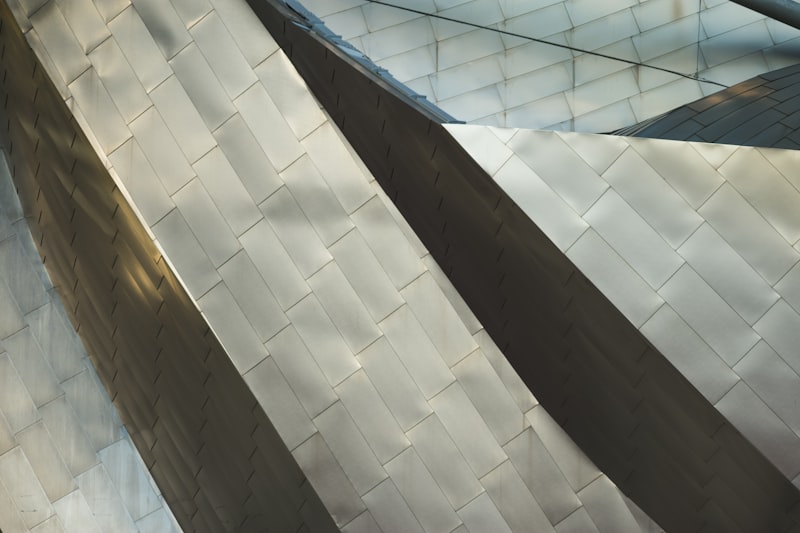Have you ever marveled at the sheer ingenuity behind today’s architectural marvels? From towering skyscrapers that seem to defy gravity to sleek museums that blend seamlessly with their surroundings, modern architecture continues to push the boundaries of what’s possible.
One such wonder is the Burj Khalifa in Dubai, standing tall as the world’s tallest building. Its sleek design and innovative engineering make it not just a skyscraper but a symbol of human achievement. Imagine standing at its base, craning your neck to see the top disappear into the clouds—truly a testament to human ambition.
Then there’s the Sydney Opera House, a masterpiece of expressionist architecture. Its sail-like design nestled against the backdrop of Sydney Harbour makes it an iconic symbol of Australia. The interplay of light and shadow on its white ceramic tiles is mesmerizing, especially at sunset when it seems to glow against the evening sky.
Moving to Spain, the City of Arts and Sciences in Valencia is a futuristic complex that houses an opera house, a science museum, and an oceanographic park. Its striking, avant-garde architecture by Santiago Calatrava is reminiscent of a spaceship landed on Earth, blending art and science into a breathtaking whole.
Not to be overlooked is the Guggenheim Museum in Bilbao, Spain. Designed by Frank Gehry, its undulating titanium curves reflect light in ever-changing patterns, creating an almost surreal experience. It’s not just a museum but an architectural sculpture that has revitalized the city and become a cultural beacon.
And how can we forget the Beijing National Stadium, also known as the Bird’s Nest, from the 2008 Olympics? Its intricate steel lattice work resembles a giant nest woven with precision, symbolizing unity and strength. It’s a structure that not only hosted athletic feats but also showcased China’s prowess in engineering and design.
These architectural wonders not only redefine skylines but also challenge our imagination. They invite us to ponder what’s possible when creativity meets technology, leaving us in awe of human achievement. Which of these marvels would you visit first?
Unveiling the Marvels: 10 Modern Architectural Wonders That Redefine Skyscrapers
In the realm of modern architecture, skyscrapers stand as testament to human ingenuity and engineering prowess. These towering structures not only pierce the skies but also redefine our urban landscapes with their innovative designs and technological advancements. Let’s delve into 10 awe-inspiring modern architectural wonders that push the boundaries of what skyscrapers can achieve.
-
Burj Khalifa, Dubai: Topping our list is the iconic Burj Khalifa, soaring at over 828 meters. Its sleek design and cutting-edge technology make it a global symbol of luxury and modernity.
-
Shanghai Tower, China: The Shanghai Tower twists elegantly into the sky, reaching 632 meters. Its twisting form reduces wind loads and enhances sustainability, setting new standards for tall buildings.
-
One World Trade Center, USA: Rising defiantly in Lower Manhattan, the One World Trade Center stands at 541 meters. It embodies resilience and strength, honoring the spirit of the city.
-
Petronas Towers, Malaysia: These twin towers in Kuala Lumpur held the title of world’s tallest buildings from 1998 to 2004. Their sleek design and stunning sky bridge continue to captivate visitors.
-
Taipei 101, Taiwan: Taipei 101’s pagoda-inspired design reaches 508 meters, combining traditional aesthetics with advanced earthquake resistance technology.

The Shard, UK: London’s tallest skyscraper, The Shard, pierces the sky at 310 meters. Its glass façade reflects the city’s dynamism and provides breathtaking views.

Lotte World Tower, South Korea: At 555 meters, Lotte World Tower in Seoul integrates cutting-edge technology with traditional Korean art and culture, standing as a new beacon of innovation.
-
Abraj Al-Bait Clock Tower, Saudi Arabia: Located in Mecca, this monumental clock tower rises 601 meters above the holy city, blending Islamic architectural elements with modern functionality.
-
Zifeng Tower, China: Nanjing’s Zifeng Tower stands 450 meters tall, featuring a distinctive spiral design that merges aesthetics with structural efficiency.
-
The Marina Bay Sands, Singapore: Although primarily a hotel and entertainment complex, its iconic triple towers and rooftop infinity pool redefine Singapore’s skyline.
Iconic Structures: Exploring the Design Secrets Behind Modern Architectural Wonders
Have you ever stood in awe of a modern architectural masterpiece and wondered about the secrets behind its design? Iconic structures around the world, like the Burj Khalifa in Dubai or the Sydney Opera House, captivate us not just with their sheer size but with their innovative designs that push the boundaries of what’s possible.
One of the key elements that make these buildings iconic is their unique architectural design. Architects and engineers behind these wonders often blend form and function seamlessly, creating structures that not only stand tall but also serve practical purposes. Take the Burj Khalifa, for example. Its sleek, spiraling design not only makes it a visual marvel but also helps in reducing wind forces, ensuring stability and safety.
Moreover, these structures often incorporate cutting-edge materials and technologies. From advanced glass composites that allow for stunning facades to sustainable building materials that minimize environmental impact, every detail is meticulously planned to achieve both aesthetic appeal and structural integrity.
The symbolism embedded in these architectural wonders also adds to their allure. The Sydney Opera House, with its distinctive sail-like shells, is not just a concert hall but a symbol of Australia’s cultural identity and creative spirit. Such symbolism resonates deeply with people, making these buildings not just landmarks but cultural icons.
From Dubai to New York: Journey Through the World’s Most Spectacular Modern Buildings
Imagine standing at the foot of the Burj Khalifa in Dubai, craning your neck to see the towering structure disappear into the clouds. This iconic skyscraper, standing at a staggering 828 meters, epitomizes modern architectural marvels. Its sleek design and technological prowess redefine what’s possible in engineering and design.
Not far away, the Marina Bay Sands in Singapore beckons with its unique boat-shaped rooftop that seems to defy gravity. This integrated resort complex combines luxury accommodation, a vast shopping mall, and the world’s largest rooftop infinity pool—all perched 200 meters above ground.
Moving westward across continents, New York City presents its own array of architectural wonders. The One World Trade Center, built on the site of the original World Trade Center towers, stands tall as a symbol of resilience and innovation. Its gleaming glass façade and symbolic height of 1,776 feet make it a poignant tribute to the past while embracing the future.
Further uptown, the Hearst Tower blends old and new with its striking diagrid structure supporting a glass skyscraper atop a historic stone base. This fusion of sustainable design principles and aesthetic appeal embodies New York’s commitment to architectural excellence.
Venturing into Asia, the Taipei 101 in Taiwan held the title of the world’s tallest building for many years. Its distinctive pagoda-inspired design and advanced engineering to withstand earthquakes and typhoons showcase Taiwan’s leadership in skyscraper technology.
Back in North America, Chicago boasts the Willis Tower (formerly Sears Tower), a pioneer in skyscraper design with its bundled tube structure and skydeck offering panoramic views over the Windy City. It redefined urban architecture when completed in 1973 and remains an icon of American innovation.
From the Petronas Towers in Kuala Lumpur to the Shard in London, each of these structures tells a story of human ingenuity and ambition. They push the boundaries of what’s possible, both in terms of height and design innovation, leaving visitors in awe and inspiring future generations of architects and engineers worldwide.
Innovative Marvels: How Modern Architecture Shapes Cities and Cultures
Have you ever walked through a city and marveled at the striking structures that seem to defy gravity and conventional design? Modern architecture isn’t just about buildings; it’s about reshaping skylines and influencing the way we live and interact with our surroundings. From the sleek glass facades of skyscrapers to the eco-friendly designs of sustainable buildings, every structure tells a story of innovation and creativity.
Modern architecture goes beyond mere functionality; it’s an expression of culture and technology. Take, for instance, the Burj Khalifa in Dubai, standing tall as the world’s tallest building. Its futuristic design not only serves as a symbol of engineering prowess but also reflects Dubai’s ambition and modernity on the global stage. Similarly, the Sydney Opera House’s unique sail-like shells not only enhance acoustics but have become an iconic symbol of Australia’s artistic heritage.
But modern architecture isn’t just about grandeur; it’s about sustainability too. Buildings today incorporate green technologies like solar panels, rainwater harvesting systems, and green roofs, reducing their environmental footprint. These innovations not only conserve resources but also inspire future generations to prioritize sustainability in urban development.
Moreover, modern architecture influences cultural identities. In Barcelona, Antoni Gaudí’s whimsical designs such as the Sagrada Família blend Gothic and Art Nouveau styles, embodying Catalonia’s cultural heritage. In contrast, the Marina Bay Sands in Singapore represents the city-state’s leap into the future with its integrated resort and iconic rooftop infinity pool, redefining Singapore’s skyline and tourism landscape.
In essence, modern architecture is a testament to human ingenuity and creativity. It shapes our cities into vibrant, functional spaces while preserving and celebrating cultural identities. As cities continue to evolve, the role of modern architecture will remain pivotal in defining our urban landscapes and cultural narratives.
Top 10 Modern Architectural Wonders That Push the Boundaries of Engineering
Have you ever wondered about the architectural marvels that defy the limits of engineering? Modern architecture has birthed breathtaking structures that not only astound with their beauty but also challenge what we thought possible in construction. Let’s delve into the top 10 modern architectural wonders that stand as testaments to human creativity and engineering prowess.
-
Burj Khalifa, Dubai: This iconic skyscraper pierces the sky at 828 meters, showcasing advanced techniques in structural design and material science.
-
Shanghai Tower, China: Rising 632 meters, it twists as it climbs, reducing wind loads and setting new standards in sustainable skyscraper design.
-
The Shard, London: With its glass façade, this 95-story pyramid-shaped tower redefines London’s skyline and engineering elegance.
-
Singapore’s Gardens by the Bay: These futuristic gardens boast Supertree structures that harness solar energy and collect rainwater, blending nature with technology.


Milwaukee Art Museum, USA: Its movable sunscreen resembling a giant bird’s wings spans 217 feet, adapting to changing weather conditions.
-
The Guggenheim Museum, Bilbao: Frank Gehry’s masterpiece challenges conventional museum architecture with its titanium-clad curves.
-
National Stadium, Beijing: Known as the “Bird’s Nest,” this stadium’s innovative steel structure symbolizes modern Olympic architecture.
-
One World Trade Center, NYC: Replacing the Twin Towers, it stands 1,776 feet tall, honoring resilience with its sustainable design.
-
Bosco Verticale, Milan: These “Vertical Forest” towers integrate over 900 trees to combat urban pollution and support biodiversity.
-
Heydar Aliyev Center, Baku: Zaha Hadid’s fluid design defies gravity with its sweeping curves, blending art, and architecture seamlessly.
Each of these architectural wonders not only captivates with its aesthetic appeal but also pushes the boundaries of engineering, leaving us in awe of human ingenuity and vision.
Sustainability and Style: Green Initiatives in Today’s Architectural Marvels
Imagine strolling through a cityscape where towering skyscrapers gleam under the sun, but they aren’t just glass and steel. These architectural marvels are equipped with solar panels that harness the sun’s energy to power entire floors, reducing reliance on traditional energy sources and cutting down on carbon footprints. It’s not just about functionality; it’s about making a statement – a statement that sustainability can be stylish.
Take the concept of green roofs, for instance. These aren’t your typical rooftops; they are lush gardens suspended high above the bustling streets. They serve dual purposes: providing insulation to regulate indoor temperatures naturally and acting as urban oases that support biodiversity in concrete jungles. It’s about reimagining space – turning what would be unused into a flourishing ecosystem that benefits both the building and its surroundings.
Inside these architectural wonders, materials play a pivotal role. From reclaimed wood flooring that tells a story of renewal to eco-friendly paints that emit fewer volatile organic compounds (VOCs), every detail is chosen with sustainability in mind. It’s about creating spaces that are healthy for occupants and the planet alike – where style meets substance in perfect harmony.

But sustainability isn’t just about what meets the eye. It’s about the unseen innovations that make a difference. Think smart building systems that adjust lighting and temperature based on occupancy, or advanced water conservation technologies that recycle and reuse resources efficiently. It’s about pushing the boundaries of what’s possible – using technology to amplify our commitment to a greener future.
Architectural Icons: Celebrating the Legacy of Modern Masterpieces Around the Globe
When we think of architectural marvels that define our modern landscape, certain iconic structures instantly come to mind. These buildings are more than mere constructions; they are symbols of human creativity and ingenuity, standing as testaments to the possibilities of architectural design.
One such masterpiece is the Sydney Opera House in Australia, a striking blend of form and function. Its sail-like roofs atop a series of shell-shaped structures make it a unique sight against the Sydney Harbour backdrop. Designed by Danish architect Jørn Utzon, this UNESCO World Heritage site continues to inspire awe and wonder.
Moving across continents, the Burj Khalifa in Dubai emerges as a towering symbol of ambition and engineering excellence. Standing at a staggering height of 828 meters, it is the tallest building in the world. Its sleek, futuristic design reflects Dubai’s aspirations to push the boundaries of modern architecture.
In the heart of Paris, the Eiffel Tower stands tall as an enduring symbol of French artistry and innovation. Initially criticized by some, it has become an unmistakable icon of the city and a global cultural icon. Designed by Gustave Eiffel for the 1889 Exposition Universelle, it remains a beloved landmark that attracts millions of visitors annually.
Closer to home, the Guggenheim Museum Bilbao in Spain represents a modern architectural masterpiece. Designed by Frank Gehry, its titanium-clad curves and unconventional forms challenged traditional architectural norms, revitalizing the city and setting new standards for museum design worldwide.
These architectural icons not only redefine skylines but also reshape our perceptions of what is possible. They stand as reminders of human creativity, innovation, and the pursuit of excellence. Each structure tells a story of its time, reflecting the aspirations and cultural identities of the societies that built them.
As we celebrate these modern masterpieces, we are reminded of the power of architecture to inspire, provoke, and evoke emotions. They are not just buildings; they are legacies that continue to captivate and amaze, inviting us to ponder the boundless potential of architectural design.
This article captures the essence of several iconic architectural landmarks while maintaining a conversational tone and engaging the reader with vivid descriptions and historical context.
Frequently Asked Questions
How were the famous modern architectural wonders constructed?
Discover how the world’s iconic modern architectural wonders were constructed with this concise FAQ. Explore the innovative techniques and engineering marvels behind structures like the Burj Khalifa, the Sydney Opera House, and the Guggenheim Museum Bilbao.
Who were the architects behind the design of these famous modern architectural wonders?
Discover the architects responsible for the iconic designs of modern architectural marvels.
What are the top 5 modern architectural wonders around the world?
Discover the top 5 modern architectural wonders across the globe, showcasing innovative design and engineering feats that redefine contemporary architecture.
What makes a building qualify as a modern architectural wonder?
Discover what qualifies a building as a modern architectural wonder with our concise FAQ. Explore the innovative designs, sustainable practices, and groundbreaking technologies that redefine contemporary architecture. Learn how these structures captivate with their aesthetics, functionality, and cultural impact, setting them apart as marvels of modern design.
Where can I find the most stunning modern architectural wonders in Asia?
Discover the most stunning modern architectural wonders in Asia with our curated guide. Explore iconic structures blending innovation and cultural significance across dynamic cities like Tokyo, Singapore, and Shanghai. From futuristic skyscrapers to avant-garde museums, our list showcases Asia’s architectural marvels shaping the skyline of tomorrow.



